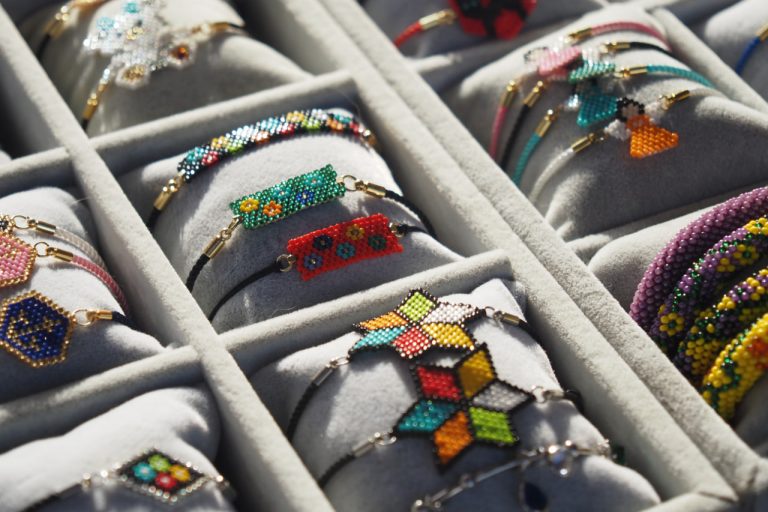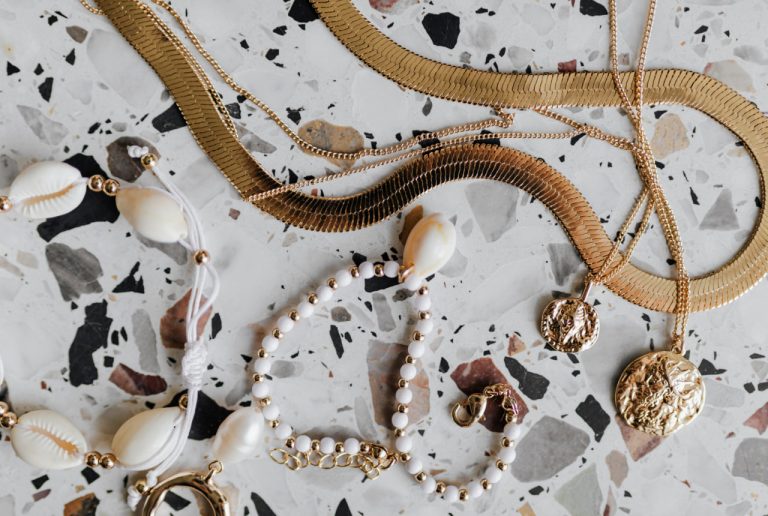Creating mosaic jewelry is a unique art form that combines intricate design, vibrant color, and thoughtful craftsmanship. At the heart of every piece are the materials used—small elements known as tesserae that come together to form patterns, images, and textures. Choosing the right materials is essential not only for the visual appeal of your jewelry but also for its durability, comfort, and meaning. Whether you’re a beginner or an experienced maker, understanding the top materials used in mosaic jewelry will help you create stunning, wearable pieces with confidence.
Glass
Glass is one of the most popular and versatile materials used in mosaic jewelry. It offers a wide range of colors, finishes, and translucencies. Smalti, a traditional Italian glass, is known for its richness and slightly uneven surface, which reflects light beautifully. Other types include stained glass, vitreous glass, and fused glass. Glass tesserae are easy to cut and shape, making them ideal for both beginners and advanced creators. They can be polished or left with a raw edge for a more organic look.
Ceramic
Ceramic tiles and fragments bring texture and earthiness to mosaic designs. They are often repurposed from broken dishes, pottery, or handmade tiles, giving each piece a unique, eco-conscious quality. Ceramic can be glazed or unglazed, and both options provide different effects. While glazed ceramic adds shine and color, unglazed varieties contribute a matte, natural appearance. Because ceramic is denser than glass, it may require stronger adhesives and careful handling during cutting.
Stone
Natural stones like marble, jasper, onyx, and agate are prized for their strength and natural beauty. Stone tesserae give mosaic jewelry a grounded, timeless appeal. Each stone has its own texture, veining, and color variation, making every piece one-of-a-kind. Stone is generally heavier than other materials and may be more challenging to cut, but it provides a luxurious, high-end feel. It’s ideal for creating statement jewelry and heirloom-quality designs.
Metal
Metal elements are often used in mosaic jewelry to add shine, contrast, and durability. Small pieces of brass, copper, silver, or aluminum can be embedded into the mosaic for detail or edging. They can be used as backgrounds or accents, enhancing both the structure and aesthetic of the piece. Metal is especially useful for modern and industrial-style jewelry. Keep in mind that metal may react with adhesives or patinate over time, which can either enhance or change the look of your work.
Enamel
Enamel is made by fusing powdered glass to a metal surface at high heat, resulting in a smooth, glossy finish. Enamel tiles or fragments are known for their intense color and resistance to fading. They can be found in vintage jewelry or bought as new tesserae. Their shiny surface and saturated tones make enamel ideal for adding focal points and highlights to mosaic designs. Enamel is generally lightweight and works well in delicate jewelry pieces like rings or earrings.
Mirror
Mirror tiles reflect light and add a touch of glamour and depth to mosaic jewelry. When used in small quantities, mirrors enhance the design by catching the eye and creating dynamic visual effects. Because mirrors are delicate and sharp when broken, they must be handled carefully and smoothed on the edges. They pair beautifully with darker materials for high contrast and can make small pieces appear larger through reflection.
Polymer Clay
Polymer clay is a flexible, moldable material that can be baked to create custom tesserae in virtually any color or texture. Artists often use it to replicate natural materials like stone, ivory, or wood, or to create entirely new patterns. It’s lightweight, easy to shape, and ideal for matching specific color palettes. While it may not be as durable as stone or glass, polymer clay opens up a world of creative possibilities, especially for playful or abstract designs.
Shell
Shells such as mother-of-pearl and abalone are used for their iridescent beauty and organic shapes. They add a soft shimmer and a sense of nature to mosaic jewelry. These materials are lightweight and relatively easy to work with, but they require care to avoid cracking. Shell tesserae are excellent for ocean-themed designs or for adding a touch of elegance to rings, pendants, and brooches.
Wood
Wooden tesserae bring warmth and a natural aesthetic to mosaic pieces. They can be stained, painted, or left raw to showcase the grain. Wood is easy to cut and very lightweight, making it suitable for larger or more sculptural jewelry. However, it must be sealed to protect against moisture and wear. Wood pairs well with metal or ceramic and is often used in rustic or bohemian styles.
Recycled and Found Objects
Mosaic jewelry often embraces sustainability and creativity by incorporating recycled materials such as broken jewelry, old buttons, beads, glass shards, and even tiny toy parts. These elements add character, history, and personality to each piece. Found objects are perfect for storytelling, as each item brings its own meaning and memory. When choosing recycled materials, make sure they are non-toxic, clean, and secure enough to be worn comfortably.
How to Choose the Right Materials
When selecting materials for your mosaic jewelry, consider several factors:
- Aesthetic: What look are you going for? Sleek and modern? Rustic and organic? Romantic and vintage? Let your desired style guide your material choices.
- Weight: Jewelry needs to be comfortable. Heavier materials like stone may be better for pendants than earrings.
- Durability: Choose materials that can withstand daily wear, especially for items like rings or bracelets.
- Ease of Use: If you’re a beginner, start with easier-to-cut materials like glass or polymer clay.
- Color Harmony: Select materials with complementary colors and finishes to create a balanced and visually appealing piece.
- Personal Meaning: Don’t hesitate to use objects that have sentimental value or symbolic meaning. Mosaic jewelry is a powerful way to tell a personal story.



